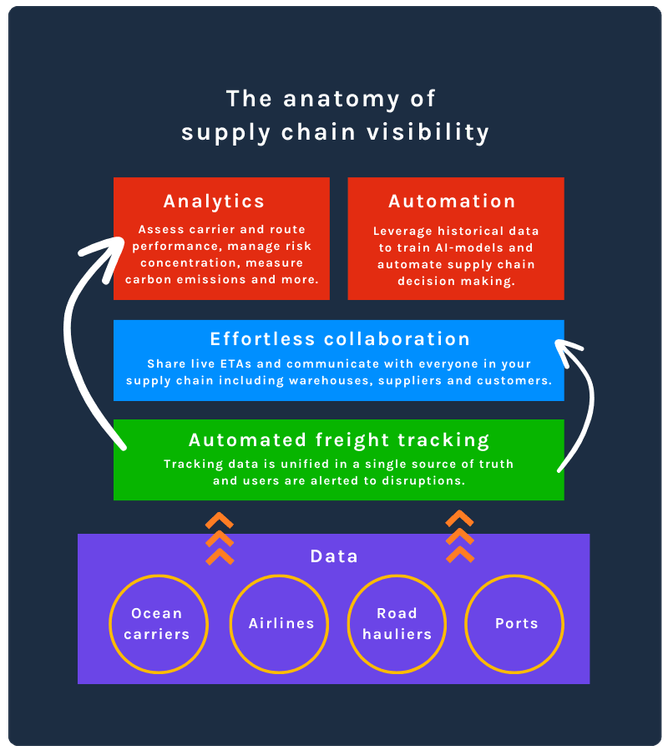Data, visibility and the path to a resilient supply chain

It has never been more important for supply chain managers to find ways of unlocking the potential of digital transformation.
Having weathered a challenging few years of pandemic-fuelled changes in supply and demand, geopolitical uncertainty, labour shortages and strikes, extreme weather and cost inflation, supply chain and logistics teams have been reminded of just how bad things can get and why building resilience and agility into supply chains should be a top priority.
Supply chain risk isn’t going anywhere, but investing in supply chain visibility can help businesses detect risks quicker and respond more efficiently to mitigate their impact. Visibility solutions also stand to boost supply chain performance and drive down costs through streamlined collaboration and data driven planning. But realising these benefits starts with breaking down the data silos that have come to characterise supply chain management.
Improving supply chain visibility is essential to gaining control over supply chain risk. But achieving end-to-end visibility is impossible if a company’s data exists offline in spreadsheets. Even if that data exists online, it is of limited use if it exists in a network of siloed tracking portals, which fail to provide enterprise-wide visibility. This is why the first step in any supply chain digitisation journey starts with unifying and organising data in a single source of truth.
But supply chains are made up of a vast network of stakeholders, and the fact is that true visibility means demand planners, supply planners, freight forwarders, carriers, 3PL partners, warehouses, and hauliers all need to exist within the same digital thread.
Beacon CEO Fraser Robinson says: "Visibility has to extend beyond the walls of your organisation to deliver value. Once you've brought all your supply chain data into one place, making it available to everyone who needs it becomes a lot easier and you can stop relying on time-intensive processes that centre around tracking portals, spreadsheets and emails."
Data quality 'determines supply chain visibility'
It is data quality that determines supply chain visibility. After all, analytics and insights are of limited value if they’re only telling half the story. This is why companies must never stop working on their data, because achieving quality data is a journey, not a destination. It is the foundation of a digital supply chain.
When an organisation’s data is in a single place – rather than in departmental or operational silos – then analytics can generate a 360-degree view of what is happening now and what has happened in the past. This paves the way for meaningful strategic planning decisions that improve supply chain performance.
A robust, well organised data-set is also the foundation of any automation programme. AI needs data to train on, and will only be as effective as the data that is entered. Even if automation isn’t a priority today, focusing on data is the best way to prepare for an automated future.
Data-driven supply chain visibility solutions like Beacon help organisations overcome the challenge of siloed data and achieve more efficient, reliable and sustainable supply chains.
Beacon’s user-friendly solution unifies real-time ocean-, air- and road-freight tracking and emissions data. A suite of analytics tools allow businesses to manage risk, generate insight and take the kind of action needed to reduce freight costs, save time and improve supply chain performance.
Beacon Live Boards allow you to share real-time updates with everyone who needs them and also to communicate directly alongside your data – bringing Google Docs-style sharing and collaboration to the world of supply chain and logistics.
Beacon’s customers include Fever-Tree – the world's leading supplier of carbonated mixers – and Tata Consumer Products, the massive India-based FMCG company.
These and many other businesses use Beacon to:
- Automate global freight tracking
- Coordinate responses to disruptions
- Keep customers informed
- Assess carrier and route performance
- Monitor carbon emissions
Such powerful features can help organisations break down data silos, and achieve the kind of supply chain visibility that is the bedrock of achieving resilience in an uncertain world.
- This is promoted content, for which payment was received







